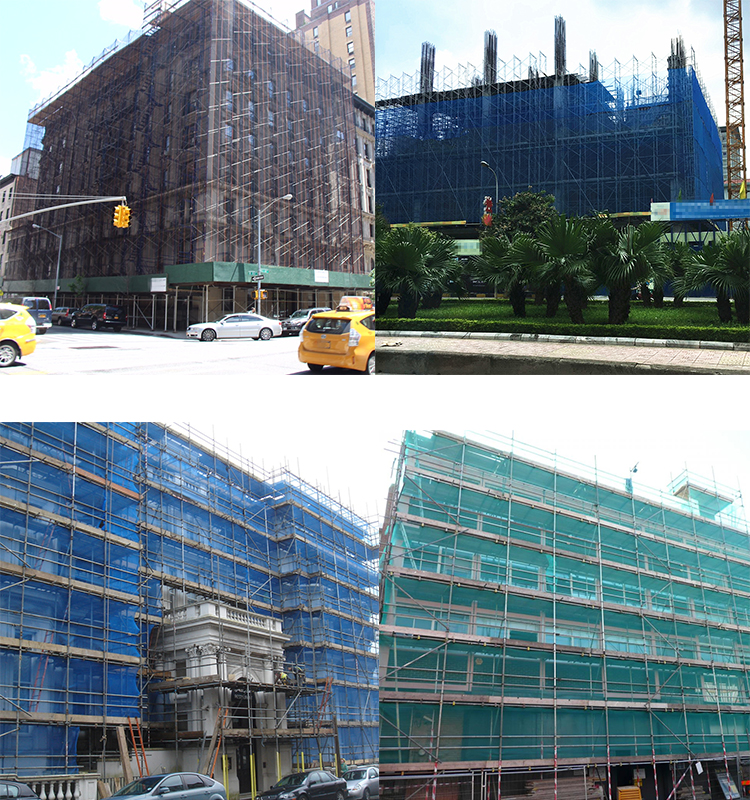Scaffolding mesh, also known as debris netting or scaffold netting, is a type of protective mesh material that is used in construction and renovation projects where scaffolding is erected. It is designed to provide safety by preventing the fall of debris, tools, or other objects from elevated work areas, as well as to provide a level of containment and protection for workers and the surrounding environment.

Scaffolding mesh is typically made from high-density polyethylene (HDPE) or polypropylene (PP) and is available in various colors, such as green, blue, or orange. It is woven or knitted to create a strong and durable netting structure that can withstand the rigors of construction sites.
The primary purpose of scaffolding mesh is to catch and contain falling debris, preventing it from reaching the ground or nearby areas. This helps to maintain a safer work environment and reduce the risk of injury to workers and pedestrians. Additionally, it provides some level of wind and dust protection, helping to control the spread of dust particles and keeping the work area cleaner.
Scaffolding mesh is typically attached to the scaffolding structure using ties, hooks, or other fastening methods. It is installed along the perimeter of the scaffold, creating a barrier that encloses the working area. The mesh is designed to be lightweight and flexible, allowing it to conform to the shape of the scaffold and provide coverage from multiple angles.
When selecting scaffolding mesh, it’s important to consider its strength, size, and visibility. The mesh should have sufficient tensile strength to withstand the forces exerted on it and prevent objects from passing through. The size of the openings in the mesh should be small enough to catch debris but still allow for adequate visibility and airflow. Additionally, some scaffolding meshes are treated with UV stabilizers to enhance their durability and resistance to sunlight exposure.
Overall, scaffolding mesh plays an important role in enhancing safety on construction sites by providing a protective barrier against falling debris. Its installation and usage should comply with local safety regulations and industry standards to ensure the well-being of workers and the public.
Post time: May-06-2024
